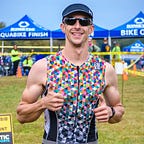Have Travel, Must Coffee
As a passionate coffee drinker and roaster, quality of my daily cup is important. When I land in a new city or country, one of my first tasks is to make a list of all the speciality coffee shops or roasters in the area. It’s knocking out three birds with one stone — getting great coffee, connecting with other passionate people and exploring a new area. This plan works well, until it doesn’t.
As my coffee knowledge has broadened, so too has the places I’ve visited in the world. Unfortunately, finding quality coffee is not always an option when traveling and if you’re like me, you’d rather go without than drink dirt-water from one of the local stalls. After finding myself coffee-less one too many times, I declared no more and set out to find a travel setup for brewing my own coffee, regardless of location.
By no means is this setup perfect, but it’s the product of several iterations and it works quite well; everyone has their own preferences, so your mileage may vary.
Travel Coffee Requirements
The Challenge: Produce a quality cup of coffee that beats the local shops.
- Must be able to carry setup in luggage or backpack
- Must be able to transit through customs and security with no issue
- Must be usable with minimal external requirements
- Must be affordable
- Should be light, convenient and easy to clean
- Should be resilient and stand-up to less-than-optimal conditions
- Should be easy to setup and fast to brew
Problem Meets Solution
I’ll spare you the lessons learned and cut directly to the setup. I carry a grinder, filter and small container with me on travel. Prior to leaving, I will roast beans or buy a bag of whole bean to take with me. It’s assumed I can find hot water either through a direct boiler or by going to some local shop.
Grinder: JavaPresse Manual Coffee Grinder ($24)
Hand grinders range in price from under $30 to over $250. Naturally, I am inclined to skew towards the top-end of the market, but I wanted an affordable solution. And knowing this was destined for travel use, I honed in on brewing french-press style with a coarse grind. I went with the JavaPresse because it’s a burr grinder which means more consistency on the grind, it’s handle detaches and it’s cylinder shape is small, there’s no electricity requirements, and it’s cheap as hell. The output is good enough for extraction on the go and it performs great.
Filter: MSR MugMate Coffee Filter ($16)
You’d think finding a good travel filter would be easy. I tried tea bags, paper pour-over props, tea steepers, and looked into compressible french-presses. In the end, I found the best value and use out of the MugMate Coffee filter. It’s small, has a fine-mesh filter, fits into a cup and holds 25 grams of coffee without any issues. The only major issue I had with the filter was the fact it’s cap did not attach in any way, so it’s easy to lose and largely useless. As a bonus though, my plastic container for holding beans fits beautifully in its place.
Container: Daiso Plastic Container ($1) *
Haven’t heard of Daiso? You’re welcome. It’s basically the Japanese version of a dollar store, but the quality is a million times better than American stores and what they sell is actually functional. My wife picked up several small containers for holding spices and after noticing it held between 20–25 grams of coffee, I commandeered one for myself. The container holds the right amount of coffee, so even without a scale, I know roughly that the dose is correct. And as mentioned above, it fits snugly into my mesh filter which makes travel easy.
* Daiso didn’t list the exact container, so I linked to something on Amazon that appeared close.
Water: Extrapolate from Anything (Free)
Measuring the proper amount of water is important, but it’s not practical to carry a measuring cup every where I go. I tend to use things around me to help estimate water amounts. Standard paper cups or glass mugs are between 12–16 ounces, water bottles typically list the fluid ounces some where on the label and a Nalgene or sports bottle will usually provide exact measurements.
Foreign (Not USA) hotels typically have a water boiler, cafes will sell ($.50)/give you a cup of hot water and as a last ditch effort, microwaves can get water boiling. As a rule of thumb, if the water is at a full boil, I am round 212F and will wait a minute before use. Temperatures won’t be exact, but it’s close enough and has yet to turn out in any disastrous way.
Quality Coffee Anywhere
And there you have it — a solution to brew quality coffee anywhere in the world from one passionate coffee roaster to another. If I am unable to locate great coffee, or simply need a pick-me-up in an inconvenient location, I break out the toys and get to brewing.
The gear has been tested in remote locations with no signal, on the road in airports, at hotels and even in the board room during executive off-sites. I’m several months into using this process and it has yet to let me down. In fact, there’s times when I will use my own gear even when great shops are around me. If you decide to pursue my approach or have your own tricks, feel free to send me a message!
